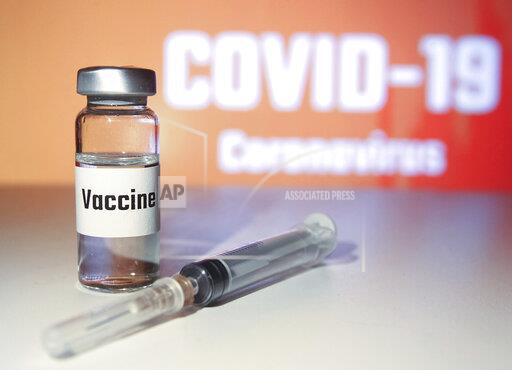Some vaccine developers hit snag as the numbers of cases and deaths rise across the country
As cases of COVID-19 rise, so do the hopes for an effective vaccine

AP Images
Operation Warp Speed is putting millions of dollars into developing a COVID vaccine in record time
As numbers of COVID-19 infections are rising at record setting rates throughout the country, there is much anticipation and confusion about whether a vaccine will be available anytime soon.
Through Operation Warp Speed, a private-public partnership initiated by the Trump administration to fast track the development, production and distribution of COVID vaccines, the goal is to produce over 300 million doses of safe vaccines, with the first doses possibly available as early as January 2021.
Some companies including Johnson & Johnson, AstraZeneca and Eli Lilly have hit delays as they each have had to pause their testing because of illnesses in test subjects. Both Johnson & Johnson and AstraZeneca have been given permission in the past week to resume their testing.
The amount of confirmed cases as of Friday, Oct. 23 is 8,387,047 according to the CDC with a rise of 74,380 cases since the day before.
The total number of deaths in the United States is 207,538 and 4,437,575 people have recovered so far.
Illinois currently has the 2nd most cases in the United States with a total of 29,088 cases in the last seven days, according to the CDC.
Having a vaccine in place could cause the number of COVID-19 cases to fall and could cause restrictions to be lifted across the county and the world. As researchers work to develop an effective vaccine, they are still uncertain as to when a vaccine will be put into place.
There are also several guidelines that must be followed when making vaccines, even for the COVID-19 vaccine, which researchers are working to develop at record speed
According to guidelines posted on the Food and Drug Administration’s website,Drugmakers must “provide data showing they followed clinical trial participants for a median of two months after their final vaccine injection.”
According to BBC News about 140 vaccines are in early development, and around two dozen are now being tested on people in clinical trials.
According to the New York Times COVID-19 vaccine tracker, as of Oct. 23, there are six vaccines that are approved for early or limited use, but none that are fully approved. China and Russia have both approved vaccines for early or limited use, meaning they will be given to a select number of people.
Currently, 12 vaccines are in phase three which means that they are being tested at a larger scale.
There are 14 vaccines being tested in phase two. In this phase they are being tested for safety on humans. Scientists give the vaccine to many individuals, such as children and the elderly, to see if the vaccine acts differently in them.
There are 33 vaccines in phase 1 which means that they are being tested for safety and dosage to ensure the vaccine can stimulate the immune system.
Before vaccines can enter phase 1, they have preclinical tests, meaning they are tested on animals.
According to the New York Times, “Scientists test a new vaccine on cells and then give it to mice or monkeys to see if it produces an immune response.” There are 92 preclinical vaccines in active development.
The COVID-19 vaccine will be out for the public to use after FDA approval with the hopes that it will create antibodies that will prevent the virus.
A vaccine can take a long time to make, but researchers and scientists are hoping to make this vaccine implemented in months rather than years.
“A vaccine would normally take years, if not decades, to develop. Researchers hope to achieve the same amount of work in only a few months,” according to BBC News.
According to the U.S department and of health & human services, this goal will be accomplished “by investing in and coordinating countermeasure development, OWS will allow countermeasures such as a vaccine to be delivered to patients more rapidly while adhering to standards for safety and efficacy.”






































